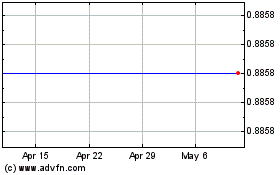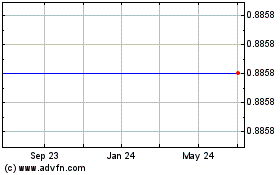NEW DELHI—India released economic data on Wednesday that
confirmed its place as an outlier in a low-growth world, and Prime
Minister Narendra Modi has promised further steps to encourage
investment and modernize bureaucracy.
But with his latest step, Mr. Modi has left India's star looking
a lot dimmer, at least for the time being.
Three weeks after his government abruptly canceled India's
largest bank notes to drill out ill-gotten wealth, companies big
and small are reeling from the shock to cash sales, large numbers
of the poor remain cut off from wages and the new rupee bills
aren't reaching many corners of the country quickly enough.
While government statisticians on Wednesday reported
year-to-year GDP growth of 7.3% for the July-through-September
quarter, some economists have already cut their growth forecasts
for the full fiscal year, which ends in March.
"Currency is like lubricant," said Rupa Rege Nitsure, chief
economist at L&T Finance Holdings. "Until the new currency
replaces the old and circulation gets restored to the original
levels, some loss of economic activity will definitely happen."
Mr. Modi has acknowledged that his move has brought "various new
difficulties in our day-to-day lives," as he put it in a recent
radio address. But he and other officials have said voiding big
bills will ultimately benefit India's economic expansion by
disciplining tax cheats and promoting digital payments.
The government's first estimate of annual growth will be
released in January. "At this stage there is virtually no data" on
which to base a prediction, said T.C.A. Anant, India's chief
statistician, on Wednesday.
The cash transfusion is "an unprecedented thing, and it's never
been done before on such a large scale," said Faraz Syed, an
economist for Moody's Analytics. "In terms of quantifying it, I
think it's very early stages."
Some economists have taken a stab at it, though. Their revised
growth predictions vary widely, reflecting deep uncertainty about
how Mr. Modi's experiment will play out.
If growth slows enough from the 7.6% clocked in the last
financial year, India could lose the mantle of fastest-growing
large economy. China is targeting growth of at least 6.5% this
calendar year.
Analysts at Ambit Capital noted in a recent report that activity
would only need to be squeezed by 10% or so between October and
December for the quarter's real growth to end up negative. The
Mumbai-based brokerage has slashed its growth estimate for the full
financial year by nearly half, to 3.5%. India hasn't grown that
slowly in more than two decades.
When Mr. Modi invalidated all 500-rupee and 1,000-rupee bills
($7.30 and $14.60) in early November, Indians were suddenly left to
buy and transact with less than 15% of the previous cash supply.
That crimped sales for everyone from roadside eateries and
neighborhood five-and-dimes to auto makers and cosmetics
companies.
The effects have rippled outward. Wholesale trade has cratered.
Tens of thousands of truckers, short on cash for meals, repairs and
other highway expenses, have sat idle. Growers have offloaded
vegetables at deep discounts—or left them to rot on the farm.
Many day-laborers and construction workers have gone unpaid for
weeks. The cash shortage has sent some of them back to the farming
villages they left behind.
"I think Mr. Modi has done a good thing. But I'll tell you the
truth: It's hurting the poor very much," said Santosh Kumar Kewat,
who mixes cement at building sites in Noida, an industrial suburb
of Delhi.
If work remains scarce and the pay unpredictable—Mr. Kewat said
a contractor shortchanged him this week, claiming to be low on
small bills—then he might hop a train back to his village, where
neighbors grow peanuts, mung beans and wheat.
"At least I will be able to eat something," he said.
As many as one-third of the nation's roughly 40 million
construction workers could end up making the same choice, said P.R.
Swarup, director-general of the Delhi-based Construction Industry
Development Council.
How soon the economy springs back depends on how quickly the
government can replenish $200 billion in canceled currency in
Indians' pocketbooks and cash registers.
Banks and ATMs had disbursed $37 billion in cash as of Nov. 27,
largely in the form of newly created 2,000-rupee bills, which are
too large for most everyday use. At what Credit Suisse estimates to
have been the recent rate of production at India's four official
presses, it could take months to print enough new 500-rupee notes
to restore consumer spending.
With their earnings now under the taxman's scanner, wealthy
Indians might shy away from big purchases for even longer. Rohit
Poddar, managing director of Poddar Housing and Development Ltd. in
Mumbai, said luxury-property prices could fall by up to 30% over
the coming year, particularly in Delhi and northern India.
According to the World Bank's latest estimate, economic activity
that is concealed from authorities to avoid taxes, skirt labor
protections or dodge red tape made up nearly 21% of India's GDP in
2007. Assuming the share has held steady, that would make India's
"shadow economy" bigger than the entire economies of Norway, South
Africa or Thailand.
Krishna Pokharel and Anant Vijay Kala contributed to this
article.
Write to Raymond Zhong at raymond.zhong@wsj.com
(END) Dow Jones Newswires
November 30, 2016 12:35 ET (17:35 GMT)
Copyright (c) 2016 Dow Jones & Company, Inc.
Credit Suisse (NYSE:CS)
Historical Stock Chart
From Aug 2024 to Sep 2024

Credit Suisse (NYSE:CS)
Historical Stock Chart
From Sep 2023 to Sep 2024
